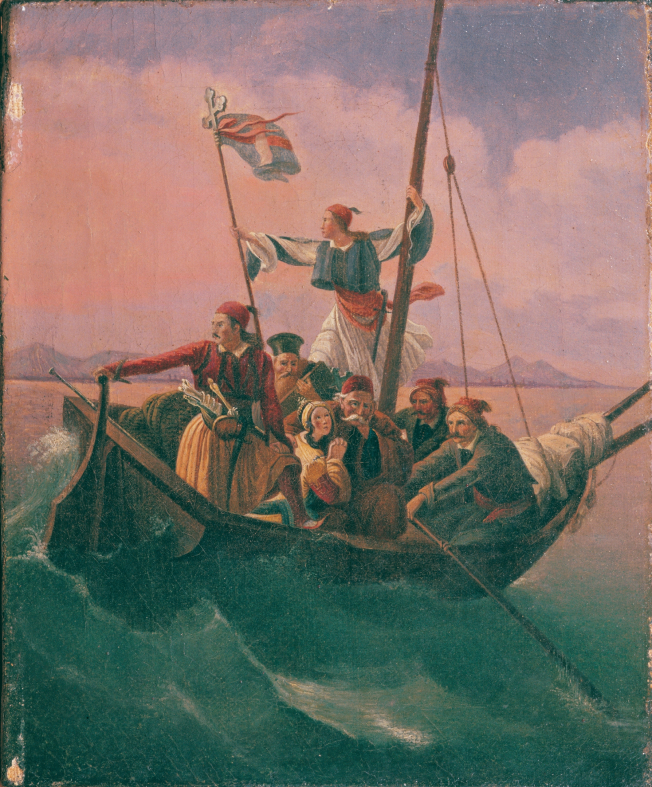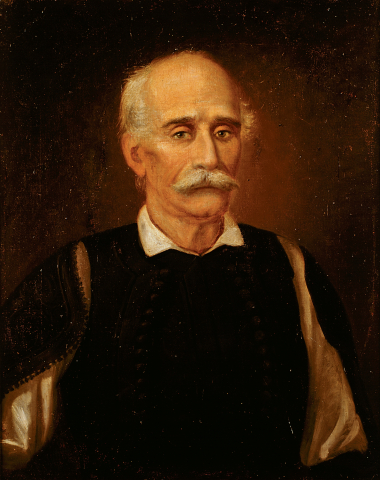Collection's title
Greeks' Boat

Υλικό
Oil on canvas
Dimensions
29X23
Source
-
Description
The work Greeks' Boat was bought by Evangelos Averoff-Tosizza in Italy, after the end of the Second World War. It shows the flight of the residents of Parga from their city when, in 1819, it was sold to Ali Pasha by the British. Their uprooting shocked Europe, and many artists concerned themselves with this subject, among them Lipparini. In 1844, Lipparini exhibited in Venice the picture Una Barca di Greci (Greeks' Boat). The work in the Averoff Gallery is a repetition of this picture by Tsokos, produced because of the tremendous response which his teacher's work had met with. The fact that this variation was painted by Tsokos in the years of his apprenticeship with Lipparini is also confirmed by the fact that the work was located and bought in Italy. It shows a boat full of fugitives - freedom-fighters, a priest, a woman - tossed about in the waves as it heads for exile in foreign parts. A young man, upright, has his arms round the mast, and, holding the flag, gazes at the homeland he is leaving, while the captain staunchly grips the helm. In spite of the fact that Tsokos is here repeating the iconographic type of his teacher and is within the realm - as the latter was - of academic idealistic painting, he allows his experiences and the emotion which springs from his patriotic feelings to be apparent, and these guide him to an emotional rendering in which the Romantic element is dominant.





